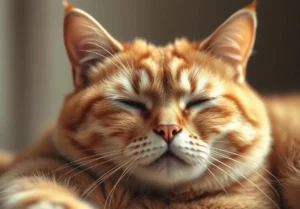Cats can be mysterious creatures, often displaying behaviors that leave their owners scratching their heads. From scratching furniture to ignoring commands, cat misbehavior can be frustrating. But why do cats misbehave?
Cats misbehave due to a variety of reasons, including boredom, stress, territorial instincts, and even health issues. Understanding the root cause of your cat’s behavior can help address and correct it effectively.
The Importance of Playtime
Playtime is not just a luxury for your feline friend, it’s an essential part of their day. Just like us humans, cats need stimulation and exercise to keep their bodies and minds healthy. Without enough playtime, they can become bored and start exhibiting unwanted behaviors like scratching furniture or acting out aggressively.
To prevent these issues, make sure to set aside some time each day for interactive play with your cat. Use toys that encourage them to run, jump, and pounce, mimicking their natural hunting instincts. This not only provides physical exercise but also mental stimulation.
Keep in mind that every cat is different, so experiment with different types of toys to see what excites your furry friend the most. You may find that they have a preference for feather toys, crinkle balls, or even catnip-filled mice. The key is to keep them engaged and entertained through regular play sessions.
Additionally, rotating their toys can help keep things fresh and exciting for your cat. This prevents them from getting bored with the same old toys and encourages them to stay active and mentally stimulated. Remember, a tired cat is a well-behaved cat, so make playtime a priority in your daily routine.
For more tips on engaging playtime activities, check out this helpful resource from the American Veterinary Medical Association: AVMA Playtime Tips.
Creating a Stimulating Environment
Cats can be curious creatures, always on the hunt for new adventures and excitement. However, if their environment lacks stimulation, they may resort to misbehaving to alleviate their boredom. To combat this, it’s crucial to create a dynamic environment that keeps your cat engaged and entertained.
Introduce a variety of toys, scratching posts, and climbing structures to satisfy your cat’s natural instincts and provide them with mental stimulation. Interactive toys that dispense treats or challenge your cat’s problem-solving skills are also great additions to their environment.
In addition to toys, consider creating vertical spaces for your cat to explore. Cat trees and shelves can provide enriching opportunities for climbing and perching, giving your cat a sense of security and ownership over their space. This can also help prevent territorial behavior and promote positive mental health.
Regularly rotate your cat’s environmental enrichment items to keep things interesting and prevent boredom. By providing a stimulating environment, you not only reduce the likelihood of misbehavior but also enhance your cat’s overall quality of life.
Remember, a happy and mentally stimulated cat is less likely to engage in undesirable behaviors, so invest time and effort into creating a dynamic and engaging environment for your furry friend.
Understanding Your Cat’s Communication
Cats communicate through a combination of body language and vocalizations. Understanding these signs can help address underlying issues causing misbehavior. For example, a cat’s flattened ears or dilated pupils might indicate fear or anxiety, leading to aggressive behavior. Similarly, excessive meowing could signal boredom or a need for attention. By paying attention to these cues, you can better understand your cat’s needs and prevent potential misbehavior before it escalates. Remember, a happy and content cat is less likely to act out.
The Impact of Stress on Cat Behavior
Stress can significantly impact a cat’s behavior, leading to various disruptive behaviors such as excessive grooming, urine spraying, or aggression. To alleviate stress in your feline friend, create a calm and safe environment. Providing vertical spaces for climbing, interactive toys for mental stimulation, and a consistent routine can help reduce stress and improve your cat’s overall well-being. Additionally, consider using pheromone diffusers or calming supplements recommended by your veterinarian to further support your cat during stressful times.
Additional Unique Insight:
One often overlooked factor that can contribute to stress in cats is changes in their environment. Moving to a new home, introducing a new pet, or rearranging furniture can all disrupt a cat’s sense of security and trigger misbehavior. Gradually introduce changes and offer plenty of reassurance to help your cat adjust smoothly.
Remember, each cat is unique, and what works for one may not work for another. By paying attention to your cat’s communication cues and addressing stress triggers, you can help prevent misbehavior and build a stronger bond with your feline companion.
Training Techniques for Cats
Training your cat may seem like a daunting task, but with the right approach, you can encourage positive behaviors and discourage those naughty antics. One of the most effective techniques is using positive reinforcement. When your cat displays desirable behavior, such as using the scratching post instead of your furniture, reward them with treats or verbal praise. This helps them associate that behavior with a positive outcome.
Another important aspect of training cats is to be patient and consistent. Cats respond best to routines, so set clear boundaries and stick to them. For example, if you don’t want your cat on the kitchen counter, consistently redirect them to a designated scratching post or bed. Over time, they will learn what is expected of them.
Remember to avoid punishment as a training technique. Cats do not respond well to negative reinforcement, and it can damage your bond with them. Instead, focus on rewarding good behavior and redirecting unwanted behavior. With patience and consistency, you can train your cat to be a well-behaved companion.
The Role of Consistency in Cat Behavior
Consistency is key when it comes to addressing cat misbehavior. Cats thrive on routine, so establishing consistent rules and boundaries is crucial. For example, if you allow your cat to sleep on the bed one night but not the next, it can confuse them and lead to behavioral issues.
Consistency also applies to training methods. If you use positive reinforcement to encourage a specific behavior, such as using a litter box, be sure to reward them every time they exhibit that behavior. This reinforces the desired action and helps your cat understand what is expected of them.
Additionally, consistency in feeding schedules, playtime, and grooming routines can help reduce stress and anxiety in cats, which can contribute to behavioral problems. By maintaining a consistent environment and routine for your cat, you can promote positive behavior and create a harmonious living space for both of you.
Seeking Professional Help
While many cat behavior issues can be addressed through at-home strategies, there are instances where seeking professional help is crucial. If your cat exhibits severe aggression, persistent litter box issues, excessive meowing, or other concerning behaviors despite your best efforts, it may be time to consult with a veterinarian or a certified animal behaviorist. These experts can assess your cat’s behavior, help identify underlying causes, and develop a tailored plan to address the issues effectively. Remember, there is no shame in seeking help when needed to ensure your feline companion’s well-being.
Fun Facts About Cat Behavior
Did you know that cats have a unique form of communication known as “slow blinking”? When your cat looks at you and blinks slowly, it’s their way of expressing affection and trust. Additionally, cats are crepuscular creatures, meaning they are most active during dawn and dusk. This behavior is rooted in their natural hunting instincts, as these low-light periods are ideal for stalking prey. Another fascinating fact is that cats have a strong sense of smell, with 200 million scent receptors in their nasal cavity, compared to a human’s mere 5 million. This heightened sense of smell plays a vital role in how cats navigate their surroundings and communicate with other felines.
Additional Unique Insight:
One important factor that can contribute to cat misbehavior is environmental enrichment. Cats are curious and intelligent animals that thrive on mental stimulation and physical activity. Providing engaging toys, interactive play sessions, climbing structures, and safe outdoor access can help prevent behavioral issues by satisfying your cat’s natural instincts and keeping them mentally sharp. By creating a stimulating environment for your feline friend, you can significantly reduce the likelihood of unwanted behaviors and promote a harmonious relationship between you and your cat. Remember, a happy and enriched cat is less likely to exhibit destructive or disruptive behavior.
Remember, each cat is a unique individual, and what works for one may not work for another. Patience, consistency, and understanding are key when addressing cat behavior issues. By observing your cat’s cues, seeking professional guidance when needed, and providing a stimulating environment, you can help foster a positive and enriching relationship with your feline companion.
Alex, a passionate animal lover, has experience in training and understanding animal behavior. As a proud pet parent to two dogs and three cats, he founded AnimalReport.net to share insights from animal experts and expand his knowledge of the animal kingdom.




